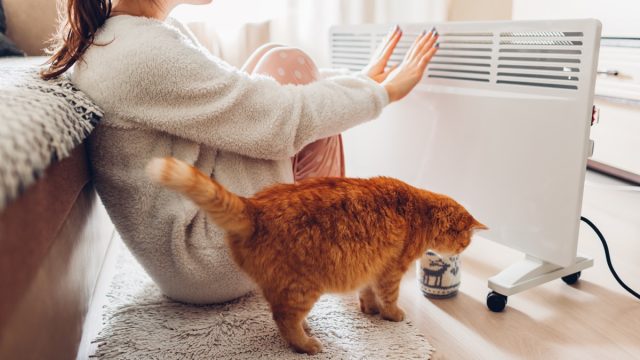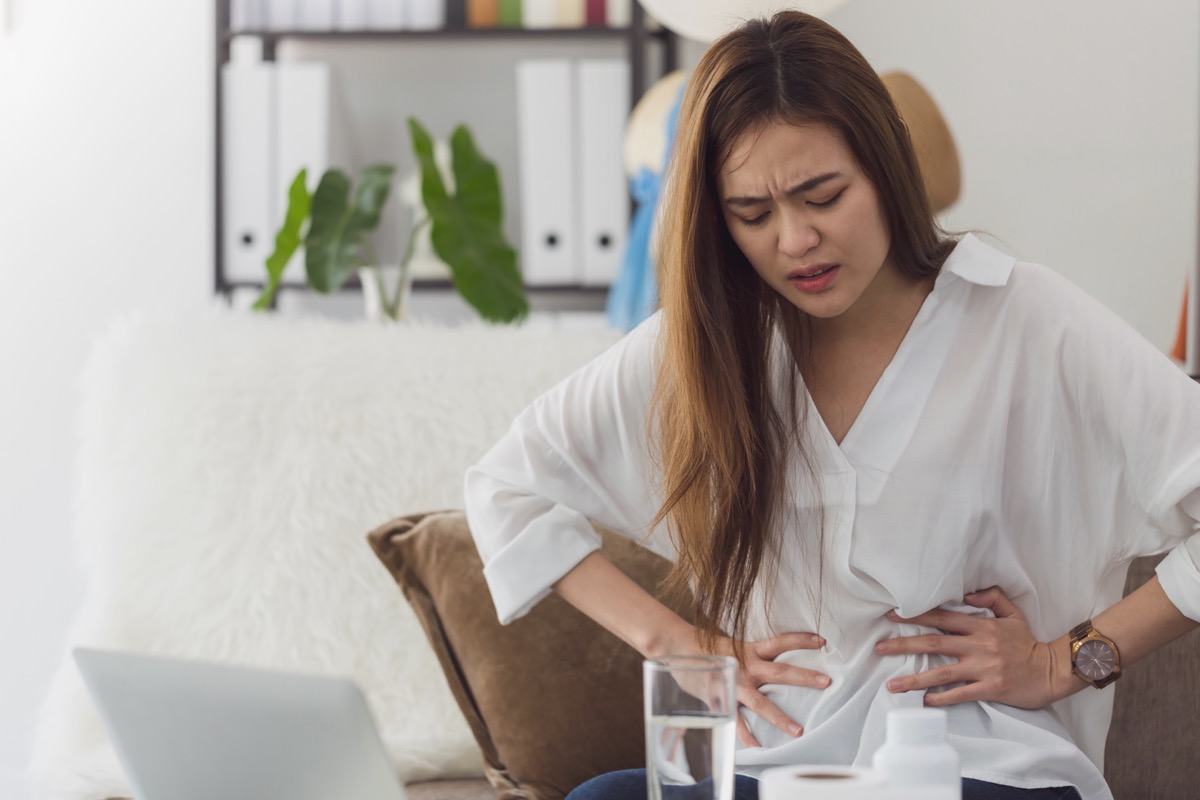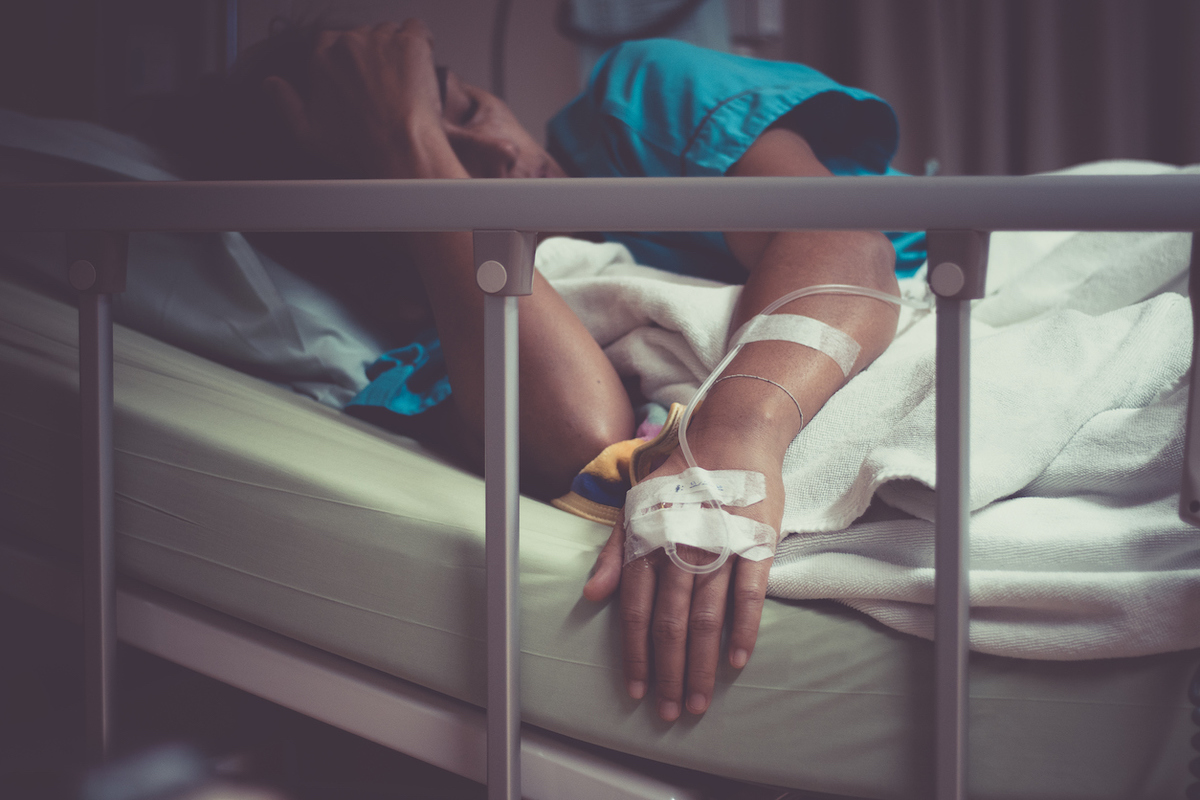The CDC Is Warning You Not to Use This to Heat Your Home

Massive snow storms have hit unexpected places this year, like Texas and Tennessee, so no matter where you live, it’s clear you need to know how to properly heat your home. Unfortunately, some heating efforts may be more hazardous than helpful. In fact, the Centers for Disease Control and Prevention (CDC) recently had to issue a warning advising people not to heat their homes with one device in particular. Read on to make sure you don’t make this dangerous heating mistake, and for more heating sources to avoid, If You’re Using This to Stay Warm, You Need to Stop Immediately.
The CDC says you should not use a gas oven to heat your home.

When it comes to heating your home, a gas oven is not a substitute for proper heating tools. On Feb. 17, the CDC issued a statement warning that using a gas oven to heat your home can expose your household to unsafe levels of carbon monoxide. Using a fireplace that is not vented or burning anything in a stove can also leave you vulnerable to high levels of carbon monoxide, according to the agency. “Carbon monoxide (CO) is produced by furnaces, vehicles, portable generators, stoves, lanterns, gas ranges, or burning wood,” the CDC states on its website. And for more hazards to steer clear of, If You Have This Battery in Your Home, You’re at Risk of a Fire.
There are other heating tools that should not be used inside your house.

You can heat your home with a generator, but this, along with other heat sources, shouldn’t be used inside your home. “If your power goes out, remember to never use a generator, charcoal grill, camp stove, or other gasoline- or charcoal-burning device inside your home, basement, or garage, or outside less than 20 feet from a window, door, or vent,” the CDC says. After all, the carbon monoxide produced from these tools “can build up in enclosed or partially enclosed spaces.” And for more lurking dangers, If You Have This Soap at Home, Stop Using It Immediately, FDA Says.
This CO exposure can lead to carbon monoxide poisoning, which is deadly.

Exposing yourself to carbon monoxide can have dangerous consequences. According to the CDC, this toxic gas can poison you, causing headaches, dizziness, weakness, nausea, vomiting, chest pain, and confusion, as well as unconsciousness and death. As experts from the Iowa State University explain on their website, both high levels or long periods of exposure to carbon monoxide can have serious complications. “The time of exposure, the concentration of CO, the activity level of the person breathing the CO, and the person’s age, sex, and general health all affect the danger level,” they say. “High concentrations of carbon monoxide kill in less than five minutes. At low concentrations it will require a longer period of time to affect the body.” And for more useful information delivered straight to your inbox, sign up for our daily newsletter.
You cannot see or smell carbon monoxide.

It’s likely you won’t know if you have been exposed to carbon monoxide because you can neither see nor smell it, which is why following the CDC guidance is extremely important. To further protect yourself from this toxic gas, the CDC recommends buying a battery-powered CO detector for your home and changing the batteries every six months. If you have a detector and it sounds, the CDC says you should immediately leave your home and call 911. And if it doesn’t sound but you suddenly “feel dizzy, light-headed, or nauseated and suspect CO poisoning,” the CDC recommends you seek prompt medical attention. And for more precautions you may be using this winter, If You’re Layering These Masks, the CDC Says to Stop Immediately.
Hundreds of people die due to accidental carbon monoxide poisoning each year.

The CDC issued this report because carbon monoxide poisoning affects many Americans every year. According to the agency, at least 430 people die each year in the U.S. as a “result of unintentional, non-fire related exposure” to carbon monoxide, and nearly 50,000 people seek emergency care annually due to accidental CO poisoning. And for more hazards to be aware of, These Are the Secret Health Dangers Lurking Inside Your Home.